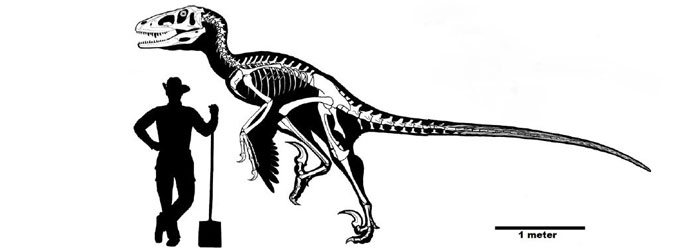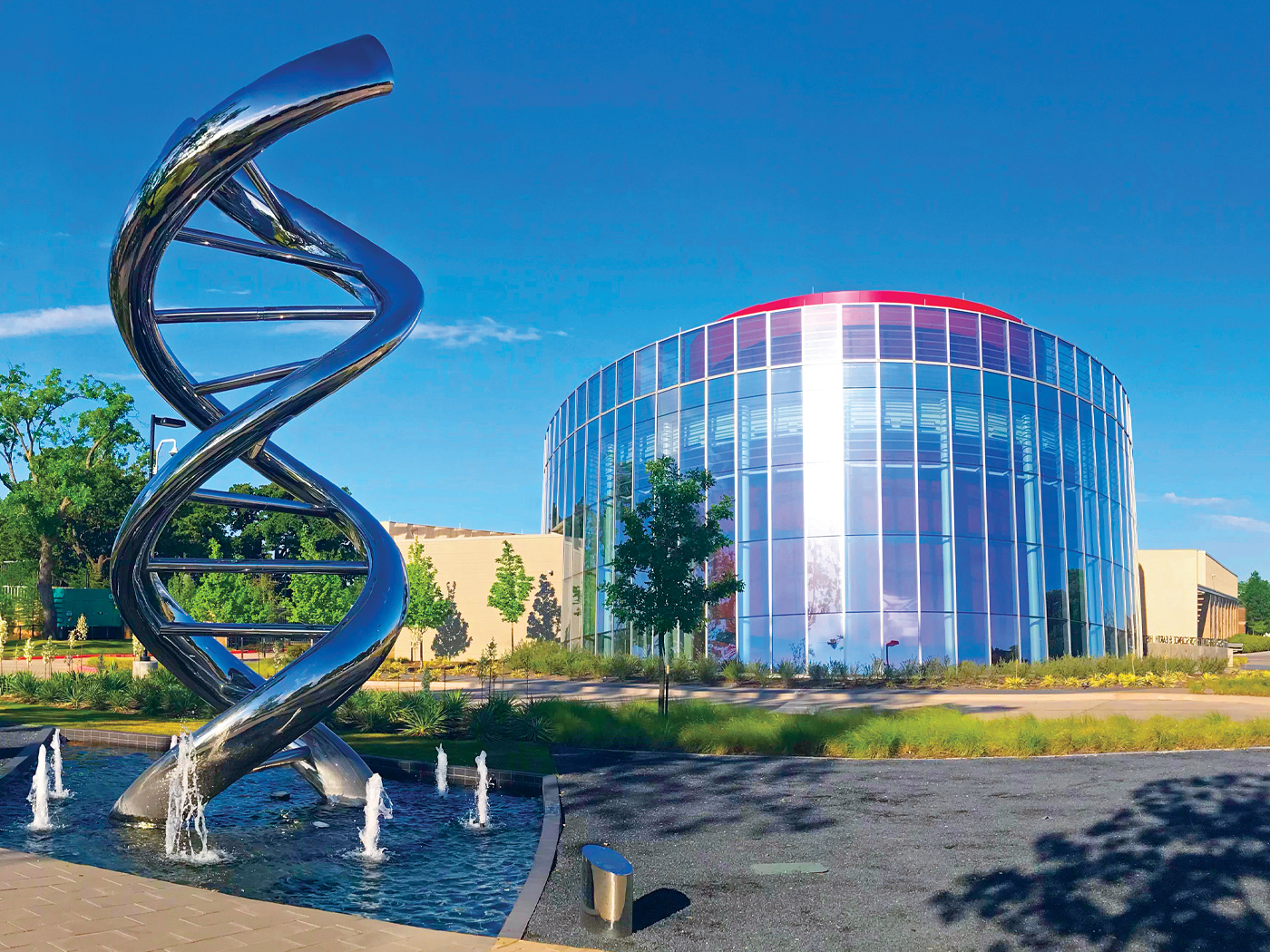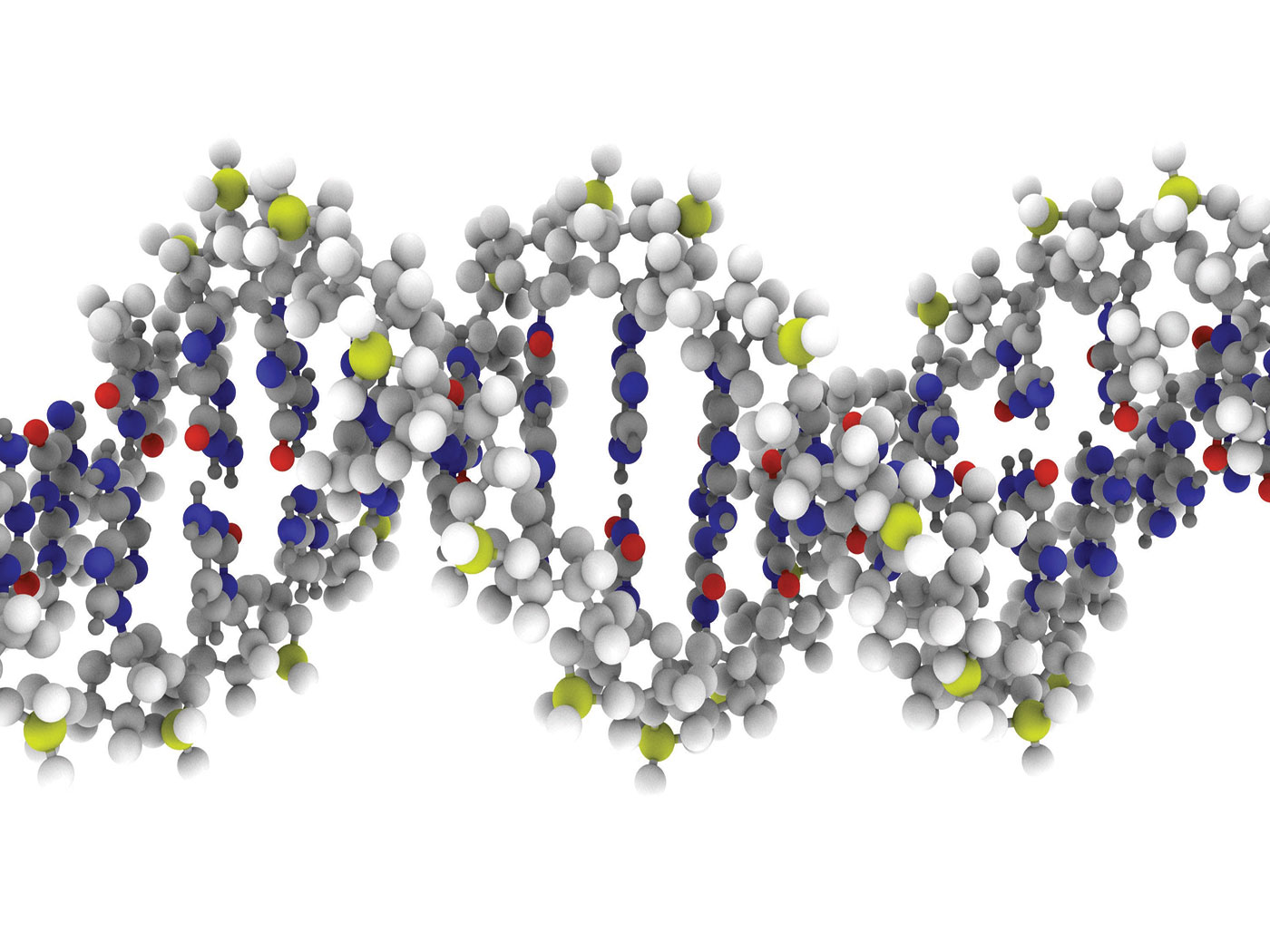Newfound "feathered dinosaurs" continue to garner fossil headlines. What's the big deal? Peter Larson of the Black Hills Institute of Geological Research, part of a team that described an eight-foot tall supposedly feathered raptor fossil, explained its significance to the Rapid City Journal. The paper wrote, "He said this discovery is so important because this group of dinosaurs is 'very, very closely related to birds.'"1 Did they find actual feathers? Does this fossil really confirm that dinosaurs evolved into birds?
The answer to the first question is easy. The group found no fossil feathers with the 20-or-so foot-long dromaeosaurid they named Dakotaraptor. Instead, they interpreted tiny bumps on its forearm bone as quill knobs. In some modern birds, quill knobs help anchor certain large flight feathers.
Photographs of Dakotaraptor's tiny bone bumps appeared in an online report in Paleontological Contributions.2 If these bumps are real quill knobs, then by definition they would have anchored flight feathers. But without any actual feathers to support the claim, how do the scientists know?
In 2007 scientists claimed to have identified quill knobs on a Velociraptor fossil.3 Since then, secular researchers have interpreted quill knobs for other similar dinosaurs.4 To people convinced that "Birds are dinosaurs," finding quill knobs on another dinosaur's forearm adds one more exhibit to an already proven case.5
But what if the first identification of Velociraptor quill knobs was wrong? If its tiny bone peculiarities had nothing to do with feathers, then some of these follow-up reports could be trotting down the same wrong path.6
Calling these features quill knobs generates new mysteries. For example, other Velociraptor forearms are quite smooth—no knobs. Assuming all members of this group had feathers that required such strong anchoring, shouldn't at least the well-preserved ones show quill knobs?
Next, the bumps identified as quill knobs on all these dinosaur bones have peculiar differences from the real ones we see today on certain bird bones. Some are much smaller in proportion. Some have different or less regular spacing. Other dinosaur bone knobs run along the outside of their arms, instead of along the back of the bone as in modern birds.
Also, real quill knobs occur in birds with feathers needing very strong attachments because of the rigors of powered flight. But dromaeosaurid arms were too small to serve as wings—and in the case of Dakotaraptor the arms were much too small. Why would these creatures need such strongly anchored feathers if they couldn't even use them to fly?
Last, tiny bone bumps have more uses than just anchoring feathers. They sometimes mark attachment points for connective tissue. Evolutionary paleontologist Darren Naish dared to express skepticism over quill knobs in a Concavenator from Spain. He wrote in a 2010 blog post, "Animals sometimes have weird, irregularly spaced tubercles arranged in lines on various of their bones, typically located on intermuscular lines (they presumably represent partially ossified attachment sites for tendinous sheets or similar structures): I've seen them on mammal bones and on a theropod tibia."7
Why must tiny bumps on dinosaur bones signify feather attachments if they don't on mammal bones?
Finally, quill knobs may play a role in a circular argument. Beginning with the premise of dino-to-bird evolution, secularists jump to the conclusion that bone bumps mark feather anchor points without objectively evaluating the ample evidence against this idea. They then link quill knobs to feathers, and feathers to becoming bird-like. The conclusion? Dinosaurs evolved into birds. But wait—that was their first premise. Whoever argues this way simply vacuums quill knobs into their shared belief in bird evolution.
Perhaps someday someone will find that these never were quill knobs. Or someone might find a true fossil feather attached to a true dinosaur. Today we see claims of quill knobs and "proto-feathers," things that look much more like decayed skin fibers than true feathers. We also see true feathers on extinct birds possibly misidentified as transitional dinosaurs. The evidence remains open to different interpretations. Beliefs may play a larger role in answering feather questions than the fossil facts.
Too bad we don't have living Velociraptors or the larger Dakotaraptors to see if any of them actually had feathers or not. On the other hand, if they were still alive, few scientists would want to get near enough to find out.
References
- Huber, C. Remains of a 'giant raptor,' new species of dinosaur, found in Harding County. Rapid City Journal. Posted on rapidcityjournal.com November 5, 2015, accessed November 19, 2015.
- DePalma, R. A. et al. 2015. The first giant raptor (Theropoda: Dromaeosauridae) from the Hell Creek Formation. Paleontological Contributions, No. 14. The University of Kansas, Paleontological Institute.
- Turner, A. H., P. J. Makovicky, and M. A. Norell. 2007. Feather Quill Knobs in the Dinosaur Velociraptor. Science. 317 (5845): 1721.
- Ortega, F., F. Escaso, and J. L. Sanz. A bizarre, humped Carcharodontosauria (Theropoda) from the Lower Cretaceous of Spain. Nature. 467 (7312): 203-206.
- Davis, M. The Four-Winged Dinosaur. NOVA. © WGBH Educational Foundation. DVD, 2008.
- Even if they are on the right track, feathered dinosaurs do not directly challenge biblical creation since God might have put feathers on some dinosaurs. Even modern birds use feathers for purposes other than flight, like showing off for mates or family recognition. Possible fossil interpretations include: quill knobs on (possibly extinct) birds, quill knobs on dinosaurs, non-feather-related bumps on birds, non-feather-related bumps on dinosaurs, or quill knobs on some kind of dinosaur-like creature that was evolving into a bird. Only the last of these five possibilities confronts the Genesis principle of creation according to kinds, and it may be impossible to prove using just feathers.
- Naish, D. Concavenator: an incredible allosauroid with a weird sail (or hump)…and proto-feathers? Science Blogs. Posted on scienceblogs.com September 9, 2010, accessed November 19, 2015.
Image credit: Adapted from Paleontological Contributions. Adapted for use in accordance with federal copyright (fair use doctrine) law. Usage by ICR does not imply endorsement of copyright holders.
*Mr. Thomas is Science Writer at the Institute for Creation Research.
Article posted on December 3, 2015.














